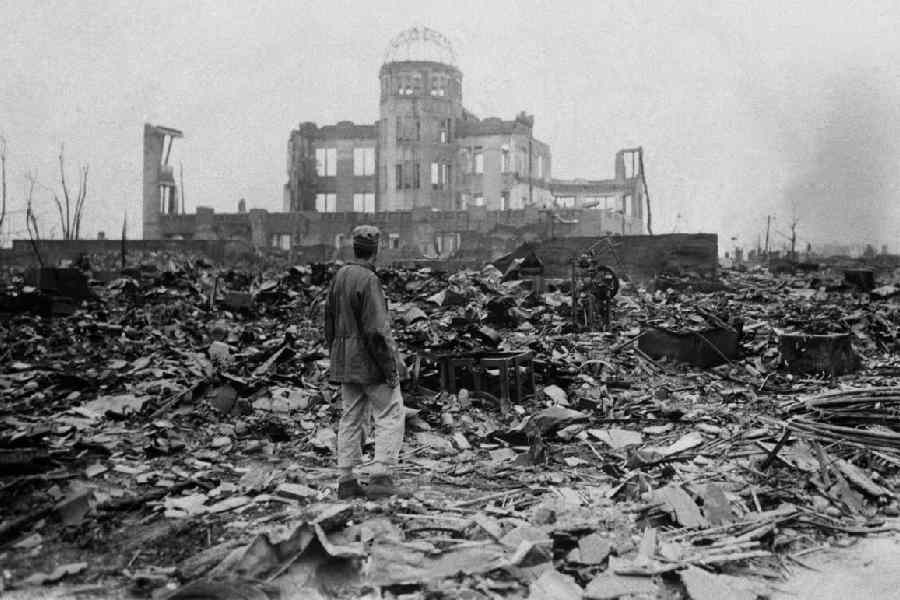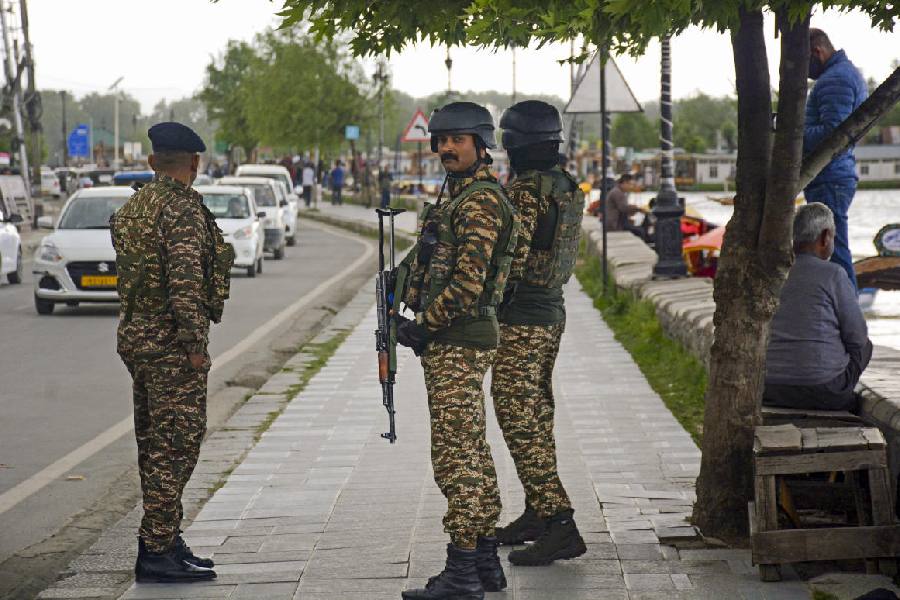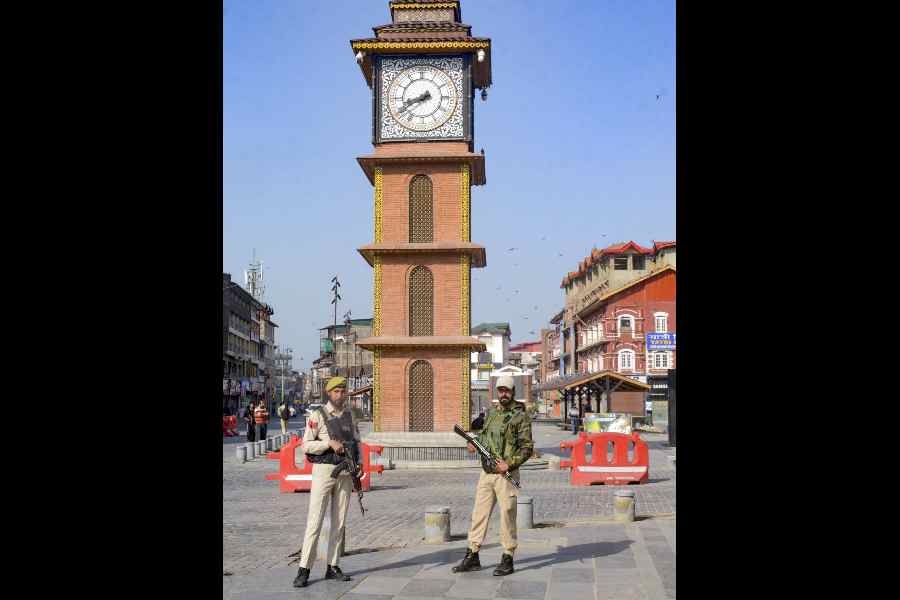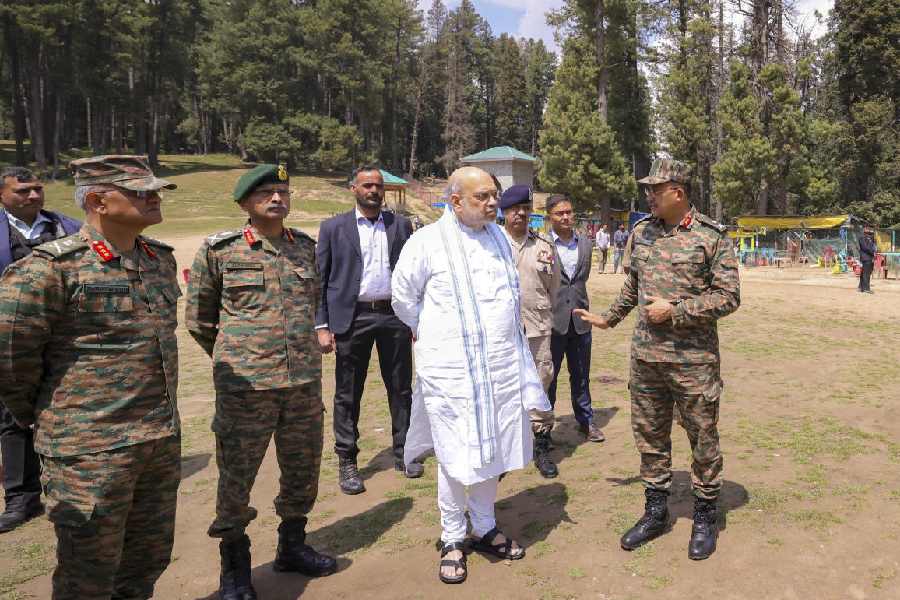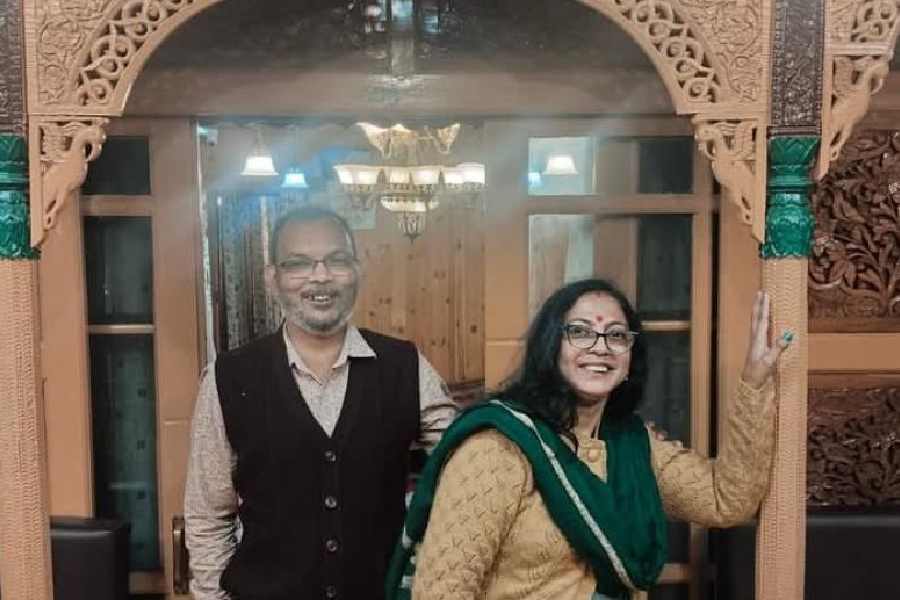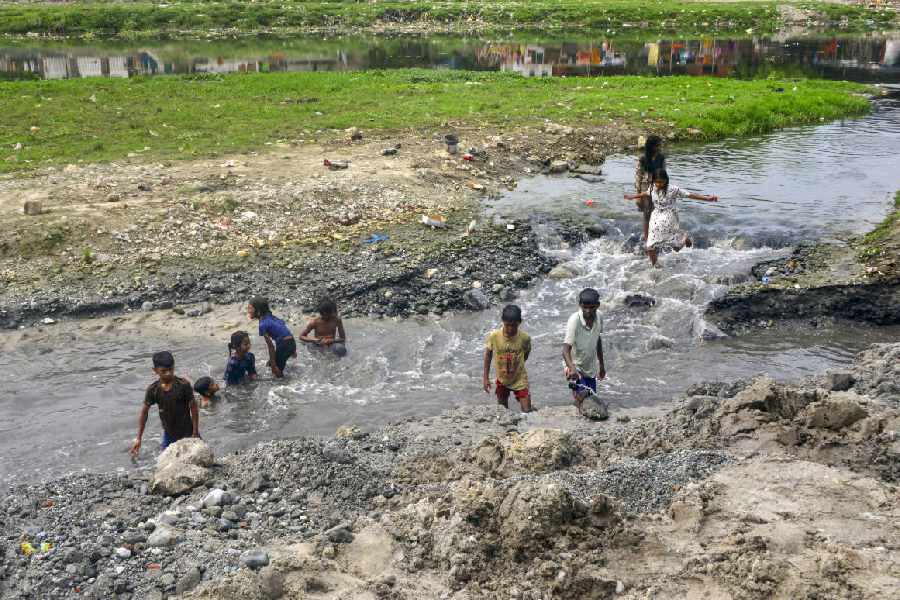Eighty years ago, in April 1945, the world was in the fiery grip of World War II.
Are we, in April 2025, doing much better?
Very strictly speaking, we are. No destroyers roam the seas, no torpedoes lurk beneath unsuspecting vessels carrying innocent passengers, no troops land on unguarded beaches, no bombs hover over the world’s cities divided between two soul-dead camps.
But that is just about it.
We are, technically speaking, better off than what our parents and grandparents were, eighty years ago or, if we are in our eighties, we ourselves were, as infants.
But before I move into the pith and substance of this column, letme share a pen-portrait of the April of 1945.
On April 1, a Japanese ocean liner-cum hospital ship, Awa Maru, was passing through the Taiwan Strait, when the American submarine, USS Queenfish (SS-393), mistaking it to be a destroyer, torpedoed it. As the vessel sank, all but one of its 2,004 passengers and crew drowned. That much for the deadly reality of mistakes, of misjudgements, in any war-crazed situation. But if this torpedoing was a mistake, another act was precise. On the same day began the Battle of Okinawa. Not a few hundred, not a few thousand, but as many as 50,000 American troops landed on that small island of Japan meeting little resistance from its dazed population of soldiers and civilians. The battle was to last for more than 80 days, with about 95,000 Imperial Japanese Army troops and 20,195 Americans killed.
Again, on the same April 1, a panic-seized Adolf Hitler moved from his heavy-walled headquarters in the Reich Chancellery to what history was to call the Führerbunker. But if fear had crawled into the Fuehrer’s brain, something else was working into the cerebral wires of one of his principal, if not the principal, adversary, President Franklin D. Roosevelt. By ‘something else’, I do not mean the calm assurance of imminent victory, the gladdening news of Hitler’s scurrying into the innards of his slipping turf. I mean by that ‘something else’ the workings of a power beyond all temporal authority. The US president’s brain was readying for what broke on April 12.
Roosevelt was a great president, an extraordinary human being, but how many great humans are completely egoless? Even as the biggest of all wars was raging, and American soldiers were killing and being killed, the 32nd president of the United States of America persuaded himself — or perhaps he needed no persuasion — to sit for a portrait painting. On April 12 — exactly eighty years ago yesterday — Roosevelt sat down in his personal retreat called Little White House in Warm Springs, Georgia for a portrait to be painted by a skilful artist of Russian origin, Elizabeth Shoumatoff, née Avinoff. Hitler was deemed doomed to death by now and Roosevelt elevated to an eternity in triumph. But who knows what fate has hidden in its sleeves of immeasurable lengths? Jack El-Hai records (“FDR’s Final Days”, July 2008): “In the quiet of the house, a calm that felt far removed from the stresses of wartime Washington, D.C., the minutes passed. Suddenly Roosevelt raised his right hand and moved it to his forehead. His head dropped. He pressed his left hand against his neck, softly said, ‘I have a terrific pain in the back of my head,’ and collapsed.” And so, instead of FDR resting in his retreat, receiving the news of Hitler’s death by suicide on April 30, the Fuehrer, restless in his bunker, heard of FDR’s death by cerebral haemorrhage. A surprised vice-president, Harry S. Truman, was inaugurated president in the Cabinet Room of the White House that very day.
In one of the bizarre theatrics of history, on that very day, with Roosevelt just dead, Hitler, with is partner, Eva Braun, holed up in his bunker, the Berlin Philharmonic gave one of the final performances by it of the Nazi era at the Philharmonic Hall in Berlin. Members of the military and the political elite heard Robert Heger conduct Brünnhilde’s last aria (“the Immolation Scene”) and the finale from Richard Wagner’s “Götterdämmerung”, Beethoven’s “Violin Concerto”, and Anton Bruckner’s “Romantic Symphony”. It is known that as members of the audience left, representatives of the ‘Hitler Youth’ offered them cyanide capsules.
It is said the gods first ‘make mad’ those they want to destroy. There is much to that. But those humans that destroy and are bent on destroying do mad things even as they are about to be destroyed. Today, eighty years ago, on April 13, 1945, German SS and Luftwaffe troops carried out the Gardelegen massacre in the northern German town of Gardelegen. This was a massacre perpetrated with direction from the SS on the Isenschnibbe estate near the town. The perpetrators forced over 1,000 ‘slave labourers’, almost all of Polish origin, who were part of a transport train evacuated from the Mittelbau-Dora and Hannover-Stöcken concentration camps, into a large barn, which was then set on fire. The Battle of Berlin was to begin under the watch of the new president, Truman, who, addressing Congress for the first time as president, said, “With great humility I call upon all Americans to help me keep our nation united in defense of those ideals which have been so eloquently proclaimed by Franklin Roosevelt… so that there can be no possible misunderstanding, both Germany and Japan can be certain, beyond any shadow of a doubt,that America will continue the fight for freedom until no vestige of resistance remains!”
Under Truman, the US’s ongoing Manhattan Project zoomed ahead and on July 16 the world’s first atomic bomb was tested, its giant plume leading its chief, J. Robert Oppenheimer, to invoke the Bhagavad Gita’s “I am become Death.”
No reader can escape feeling this reads like it could be about today.
The US’s new B61-13 nuclear gravity bomb, said now to be on the ‘fast track’ of development, claims to be 24 times more powerful than the one that destroyed Hiroshima in August 1945. President Donald Trump’s reported go-ahead for this is explained by the change in Russia’s nuclear doctrine to allow for its use of nuclear weaponry against any adversary, nuclear or non-nuclear, and China’s giving up on its no-first-use commitments. Doubtless the real danger of non-State players using stealth and Artificial Intelligence to gain nuclear leverage is part of the B61-13 programme. Nine countries, including India, together hold approximately 12,100 nuclear warheads.
And like the Berlin Philharmonic concert in April 1945, soporific tunes of everyday routine are playing in every city even as they face peril.
At the Avadi session of the Congress in 1955, a resolution was adopted to save humanity from the nuclear peril. Rajiv Gandhi’s Action Plan in 1988, for a ‘Nuclear Weapons Free and Non-Violent World Order’, reiterated India’s commitment to the ideals of Bertrand Russell and Jawaharlal Nehru. Can not, should not, India, as a nuclear power, call for a world initiative between this April and August 2025, the 80th anniversary of Hiroshima, to make the world safe from weapons of mass destruction?
I do not know of one scientist associated with the development of nuclear weapons technology in India who has even remotely approximated what the Pugwash founders tried and did. I believe a new Pugwash Movement can start from India, with India unveiling a startling counter-nuclear narrative by dismantling a certain number of its nuclear warheads as an example. And this should not be an exercise in the pieties of peace. It should be a hard-wired scientific initiative perhaps even using AI to develop counter-weapons technologies in strategies for the defence of nation-states and also in strategies for the defence of humanity.
India has been one of the nine ‘nuke’ powers for long now. It is time, this 80th anniversary year, for it to do something unusual, something very quintessentially Indian: be the first out of the nine to become a counter-nuke nuke power. Can it offer any greater example of Vishwaguruness?

